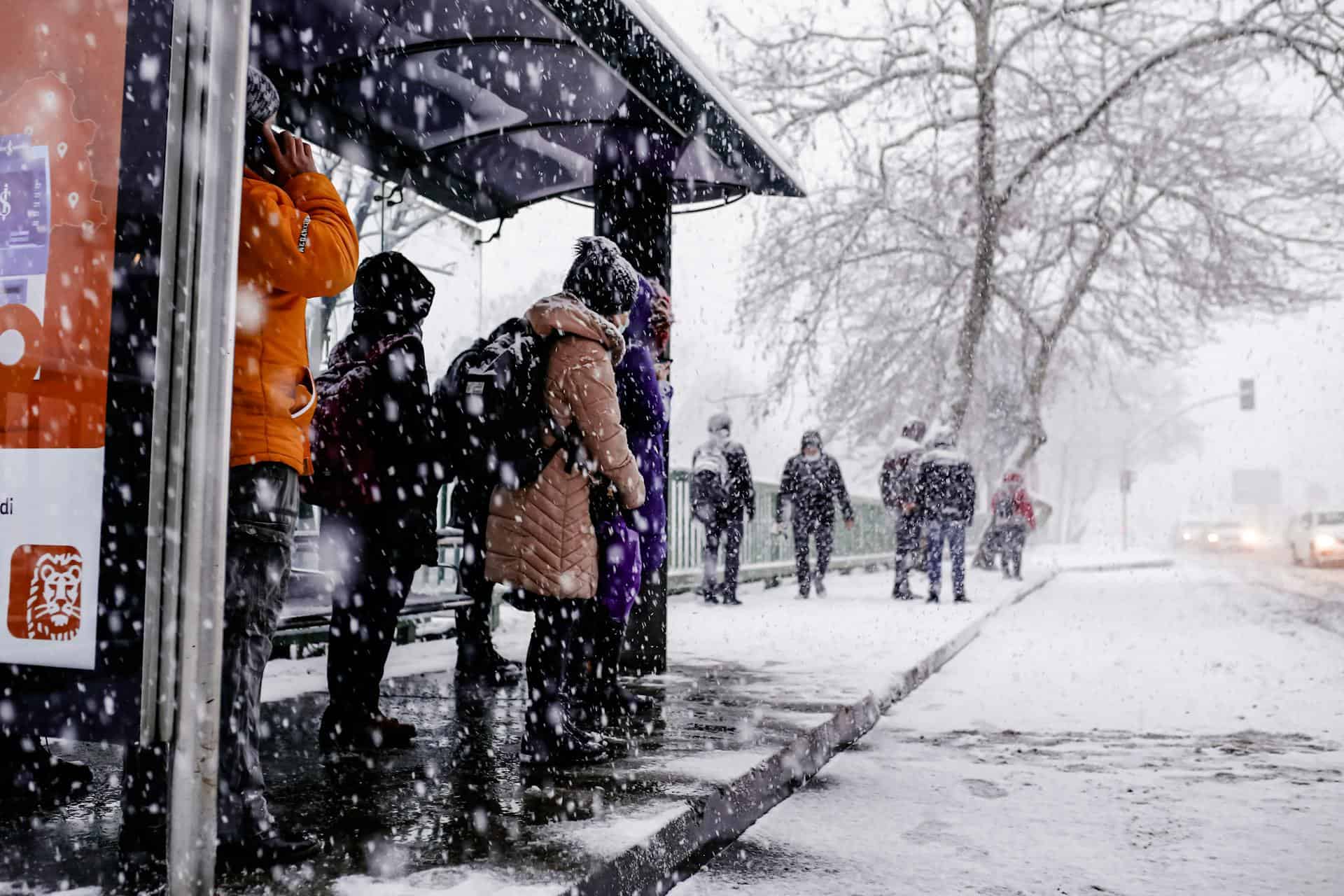When the Blizzard Hits, Why Are We Still Commuting?

As Winter Storm Blair wreaks havoc across the United States, blanketing highways with snow, disrupting power grids, and bringing life-threatening conditions to millions, the absence of leadership in promoting remote work is both perplexing and deeply frustrating. With the storm spanning over 1,500 miles from the Plains to the Mid-Atlantic, affecting more than 60 million people, this is a moment when proactive policies could save lives, reduce economic disruption, and maintain a semblance of normalcy. Yet, federal, state, and local governments, along with many business leaders, remain silent on one of the most obvious solutions: encouraging or mandating remote work.
Video: “When the Blizzard Hits, Why Are We Still Commuting?”
Podcast: “When the Blizzard Hits, Why Are We Still Commuting?”
The National Weather Service has issued stark warnings, with blizzard conditions, significant icing, and dangerously low visibility reported in numerous states. In Ohio, where my hometown of Columbus braces for up to six inches of snow with winds gusting at 35 mph, traveling by car is increasingly perilous. Across the Midwest and Northeast, the story is much the same: jackknifed trucks on icy highways, stranded motorists, and overwhelmed emergency services. Despite these conditions, countless employees are being forced to navigate hazardous commutes because their workplaces have not pivoted to remote work, a glaring oversight that defies common sense.
We know remote work works. The COVID-19 pandemic provided a crash course in adapting business operations to a virtual environment. The technology exists, the infrastructure is already in place, and millions of workers have proven that they can remain productive from home. Yet, even with this proven capability, many leaders are failing to utilize it in the face of a weather emergency. Why? The reasons likely range from bureaucratic inertia to outdated attitudes toward work culture, but none of these excuses hold up under scrutiny.
Promoting remote work during Winter Storm Blair should have been a no-brainer. By eliminating the need for employees to commute, organizations would reduce the risk of accidents and ease the burden on already-strained emergency responders. Hospitals and police forces are dealing with enough chaos during the storm; they shouldn’t also have to contend with preventable traffic incidents involving commuters who shouldn’t have been on the roads in the first place.
Moreover, the economic argument for remote work during such crises is undeniable. Forcing employees to brave treacherous conditions not only endangers lives but also disrupts business operations when workers arrive late, exhausted, or worse, unable to make it in at all. Remote work ensures continuity and productivity while safeguarding employees’ health and safety. For businesses, this is a matter of operational resilience. For employees, it’s a matter of survival.
Some government officials have recognized the need for caution. Kentucky Governor Andy Beshear, for example, declared a state of emergency ahead of the storm to mobilize resources and protect public safety. Yet, declarations of emergency are not enough, and he hasn’t called for remote work. There has been no unified call to employers to allow or require remote work where possible. Nor have we seen systematic efforts to support businesses in implementing these measures. The result is a piecemeal approach where employees are left to fend for themselves, navigating both literal and figurative storms.
The contrast with other countries is striking. In Japan, for example, during typhoons or heavy snowfall, government agencies and business leaders routinely issues advisories encouraging remote work to ensure public safety. Similarly, during times of severe air pollution, the Delhi government has called for work-from-home for its employees and urged private organizations to adopt similar measures. These examples demonstrate that remote work is not only practical but an essential part of emergency management in modern governance.
This lack of foresight and action reflects poorly on leadership at every level. It demonstrates an unwillingness to embrace modern solutions and an indifference to the lessons learned during the pandemic. Remote work isn’t just a convenience—it’s a tool for resilience in times of crisis. It minimizes risk, preserves resources, and protects lives. To ignore it in the face of a storm like Blair is to willfully ignore a straightforward, effective solution to a predictable problem.
For private sector leaders, this is a missed opportunity to demonstrate care for employees and agility in the face of challenges. The ability to transition seamlessly to remote operations is a competitive advantage, and companies that fail to adopt it risk losing both their employees’ trust and their operational efficiency. For government leaders, the failure to encourage or mandate remote work during Winter Storm Blair is an abdication of responsibility. It suggests a reactive mindset, focused on managing disasters rather than preventing them. In fact, nearly every voter in my LinkedIn poll of over 200 respondents supported remote work during this snowstorm.
As the storm continues its march across the country, bringing chaos in its wake, it’s not too late to act. Leaders at all levels must recognize the role remote work can play in mitigating the impact of this crisis. They should issue immediate directives urging businesses to adopt remote policies where possible. Additionally, they should provide resources to help smaller organizations transition to virtual operations during emergencies.
Winter Storm Blair should be a wake-up call. It highlights the urgent need for forward-thinking leadership that prioritizes safety and leverages modern tools to weather crises. Remote work is not a luxury—it’s a necessity in situations like these. The question isn’t whether we can afford to adopt it; it’s whether we can afford not to. For now, the answer is painfully clear: lives, livelihoods, and trust in leadership are all on the line.
Key Take-Away
Winter Storm Blair highlights the danger of still commuting in hazardous conditions. Remote work is a proven solution to reduce risks, ensure business continuity, and protect lives during crises. Share on XImage credit: Ömer Faruk Yıldız/pexels
Dr. Gleb Tsipursky was named “Office Whisperer” by The New York Times for helping leaders overcome frustrations with hybrid work and Generative AI. He serves as the CEO of the future-of-work consultancy Disaster Avoidance Experts. Dr. Gleb wrote seven best-selling books, and his two most recent ones are Returning to the Office and Leading Hybrid and Remote Teams and ChatGPT for Thought Leaders and Content Creators: Unlocking the Potential of Generative AI for Innovative and Effective Content Creation. His cutting-edge thought leadership was featured in over 650 articles and 550 interviews in Harvard Business Review, Inc. Magazine, USA Today, CBS News, Fox News, Time, Business Insider, Fortune, The New York Times, and elsewhere. His writing was translated into Chinese, Spanish, Russian, Polish, Korean, French, Vietnamese, German, and other languages. His expertise comes from over 20 years of consulting, coaching, and speaking and training for Fortune 500 companies from Aflac to Xerox. It also comes from over 15 years in academia as a behavioral scientist, with 8 years as a lecturer at UNC-Chapel Hill and 7 years as a professor at Ohio State. A proud Ukrainian American, Dr. Gleb lives in Columbus, Ohio.

